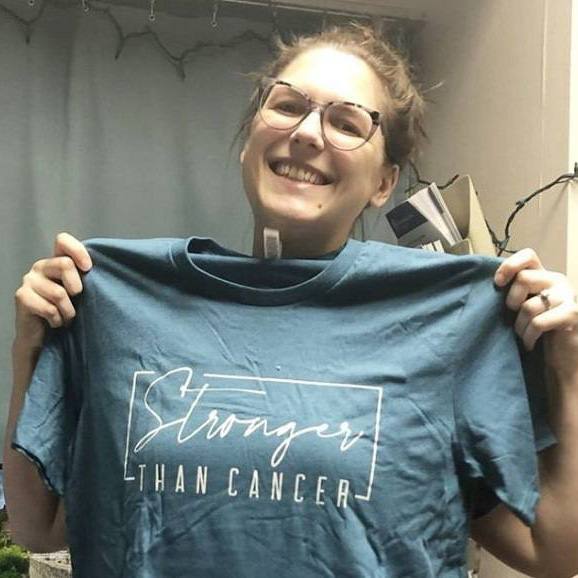-
Sharing Mayo Clinic
Uncovering a Life-Saving Diagnosis for Paige
Pain made it impossible for Paige Whorton to run and play with her friends, and no one could tell her why. Then a team at Mayo Clinic took a closer look and found a rare genetic disorder. That diagnosis has given Paige and her family renewed hope for the 12-year-old's future.
Paige Whorton's zeal for life is infectious. "I like parasailing, exploring and zip lining — daredevil stuff," she says.
Pain in her joints, however, was slowing the 12-year-old down.
"I couldn't do anything fun with friends," Paige says. "My bones and joints would hurt when I would run."
Over several years, Paige's condition deteriorated. In constant pain, she had to complete the second half of sixth grade at home. But no one could give her any clues about what was happening.
"Each specialist would say, 'This is not our division … You'll need to go somewhere else,'" says Paige's mother, Belinda Whorton. "But we couldn't get put on to the right place."
That's when Paige and her family turned to Mayo Clinic. Her care team, led by geneticist Brendan Lanpher, M.D., conducted a comprehensive evaluation of Paige's condition. Using careful testing and analysis, they uncovered a rare genetic disorder that, if it wasn't treated properly, could eventually become life-threatening. That clear diagnosis paved the way for Paige to receive the treatment she needs.
A complicated puzzle
When Paige arrived at Mayo Clinic's Rochester campus, Dr. Lanpher began working to find answers for her. He suspected lysosomal storage diseases, a group of rare inherited disorders in which enzymes don't properly break down complex molecules. That can lead to damage to bone, the heart and other tissues.
"She had a number of symptoms that were all subtle but suggested a pattern that pointed to metabolic storage disorder," Dr. Lanpher says. "Left untreated, these diseases can cause premature death."
Dr. Lanpher's team worked quickly and collaboratively to investigate. Results of the first test they recommended for Paige, a urine test, were just slightly outside the normal range. This had been the point where other providers stopped and sent Paige home.
"Because all her symptoms fit the profile of lysosomal storage disease, it made sense to keep testing," says Erin Conboy, M.D., a biochemical genetics fellow. "We moved on to whole exome DNA testing, which examines all the disease-causing genes."
"It was clear that we needed to look deeper within the gene to find the second mutation." — Filippo Pinto e Vairo, M.D., Ph.D.
To confirm the disease, Paige's DNA needed to show two copies of a genetic mutation. The results showed only one. The team wasn't ready to leave it at that. A group from Mayo Clinic's Department of Clinical Genomics within the Center for Individualized Medicine dug deeper into research for an answer.
"We rely on computers to help us find genetic alterations. It was clear that we needed to look deeper within the gene to find the second mutation," says Filippo Pinto e Vairo, M.D., Ph.D., a Mayo Clinic research fellow. "To do that, we expanded the computer analysis to a little-known area outside the defined region."
That approach worked. "We finally found it in a region that the computer analysis typically does not cover," Dr. Pinto e Vairo says.
A solution revealed
Discovering that genetic mutation confirmed Paige's diagnosis: mucopolysaccharidosis type VI, also known as Maroteaux-Lamy syndrome, a rare form of lysosomal storage disease.
One final step stood between Paige and treatment. The team needed a biochemistry test to prove Paige's enzymes weren't working and that she needed enzyme-replacement therapy. Surprisingly, the test showed Paige's enzymes were normal. But her team didn't stop there.
"We were convinced we had the right diagnosis," Dr. Conboy says. "We knew there was a flaw in that test, so we sent it to a different lab."
"This was a complex case that no single one of us could have solved on our own." — Brendan Lanpher, M.D.
The test was run for a second time, and this time it showed Paige's enzymes weren't working. The diagnosis her Mayo Clinic team had landed on was correct.
To stop the disease from progressing, Paige now receives weekly enzyme-replacement therapy. She'll continue with that treatment, which has allowed her to go back to school, for the rest of her life — a life that might have otherwise ended too soon.
"I'm so proud of my team. I am confident this diagnosis would have been missed just about anywhere else," Dr. Lanpher says. "This was a complex case that no single one of us could have solved on our own."
Learn more about Paige's story in the video below.
HELPFUL LINKS
- Learn about the Department of Clinical Genomics.
- Explore Mayo Clinic's Center for Individualized Medicine.
- Read about research at Mayo Clinic.
- Request an appointment.
Related Articles








